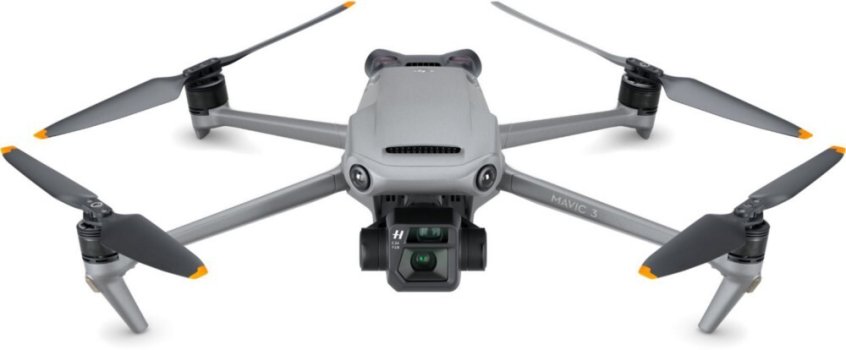K
Kathleen Martin
Guest
After reading about DJI’s latest drone, the Mavic 3, I was prompted to reflect on the speed technology in this area has progressed. DJI launched its Mavic series in September 2016, and it was already a highly competitive device, foldable, with a 12MPX camera capable of recording 4K videos at 24 fps, a flight time of 27 minutes (and all the features that have made flying a drone within anyone’s reach, with automatic stabilization and return to base (RTH) when the battery drops below a certain level), and a range of almost seven kilometers.
The new Mavic 3 comes with two Hasselblad cameras, one a 128º wide angle and the other a hybrid 28X telephoto lens, 5.1K video up to 50 fps or 4K video up to 120 fps, and capable of flying up to 46 minutes on a single charge and with a range of up to 15 kilometers, with an RTH function capable of even reading wind information or making decisions like flying over obstacles instead of around them to save energy.
I’m not going to be buying a DJI drone any time soon, nor is the company paying me for discussing it. However, the evolution of its technical specs is a great opportunity for me to talk about technological scenarios, because as its features perfectly prove, when we talk about technology, we have to make our plans around these kind of scenarios, where the key features of a device are perfectly capable of doubling in very few years, despite the fact that when they were launched we were already talking about highly optimized and very competitive devices.
In short, there is no comparison with the first drones that came on the market, which required considerable skill to prevent losing them if they ran out of battery over the course of their five-minute flights. In a very short time, we have moved to a completely different order of magnitude, which allows much more advanced uses, taking the use of drones to a very different dimension. Drones are now being used for a huge range of purposes.
At the same time, the legislative environment has adapted quickly: at the beginning of the development of a particular technology, we typically find problems, abuses or all kinds of situations that generate, sometimes, a certain level of concern in society. Over time, the law gradually adapts and adjusts, sometimes with steps backwards and forwards, with excessive restrictions giving way to a more pragmatic approach, with differences between different environments and countries, etc., until it becomes normalized. Thinking about a technology in the light of the limitations imposed by legislation at a given time, especially when it is in its infancy, tends to be of little practical use, and leads to incomplete analyses that undervalue it and reduce its scope.
Continue reading: https://medium.com/enrique-dans/drones-are-a-perfect-example-of-technological-progress-96e683752f31
The new Mavic 3 comes with two Hasselblad cameras, one a 128º wide angle and the other a hybrid 28X telephoto lens, 5.1K video up to 50 fps or 4K video up to 120 fps, and capable of flying up to 46 minutes on a single charge and with a range of up to 15 kilometers, with an RTH function capable of even reading wind information or making decisions like flying over obstacles instead of around them to save energy.
I’m not going to be buying a DJI drone any time soon, nor is the company paying me for discussing it. However, the evolution of its technical specs is a great opportunity for me to talk about technological scenarios, because as its features perfectly prove, when we talk about technology, we have to make our plans around these kind of scenarios, where the key features of a device are perfectly capable of doubling in very few years, despite the fact that when they were launched we were already talking about highly optimized and very competitive devices.
In short, there is no comparison with the first drones that came on the market, which required considerable skill to prevent losing them if they ran out of battery over the course of their five-minute flights. In a very short time, we have moved to a completely different order of magnitude, which allows much more advanced uses, taking the use of drones to a very different dimension. Drones are now being used for a huge range of purposes.
At the same time, the legislative environment has adapted quickly: at the beginning of the development of a particular technology, we typically find problems, abuses or all kinds of situations that generate, sometimes, a certain level of concern in society. Over time, the law gradually adapts and adjusts, sometimes with steps backwards and forwards, with excessive restrictions giving way to a more pragmatic approach, with differences between different environments and countries, etc., until it becomes normalized. Thinking about a technology in the light of the limitations imposed by legislation at a given time, especially when it is in its infancy, tends to be of little practical use, and leads to incomplete analyses that undervalue it and reduce its scope.
Continue reading: https://medium.com/enrique-dans/drones-are-a-perfect-example-of-technological-progress-96e683752f31

